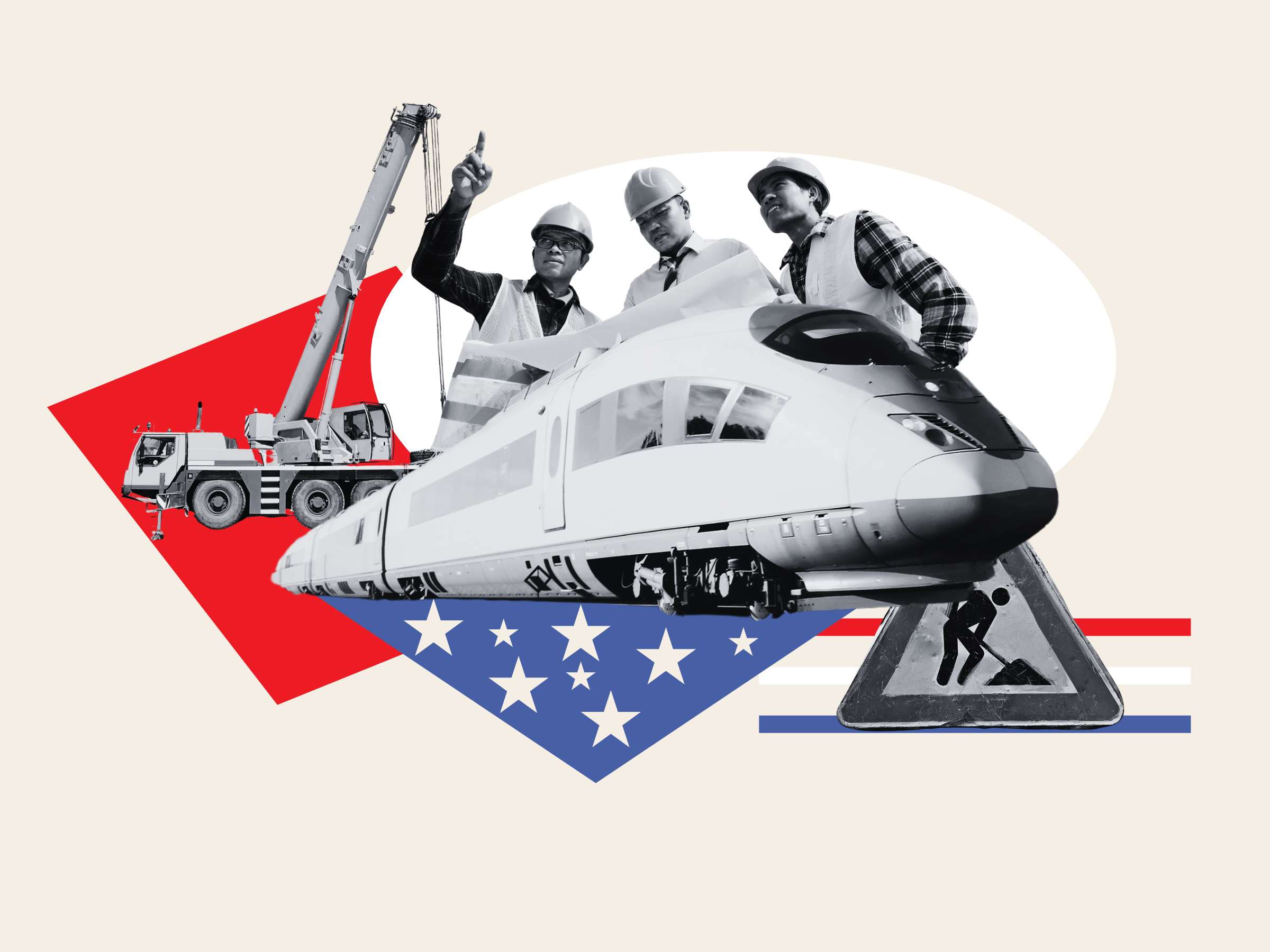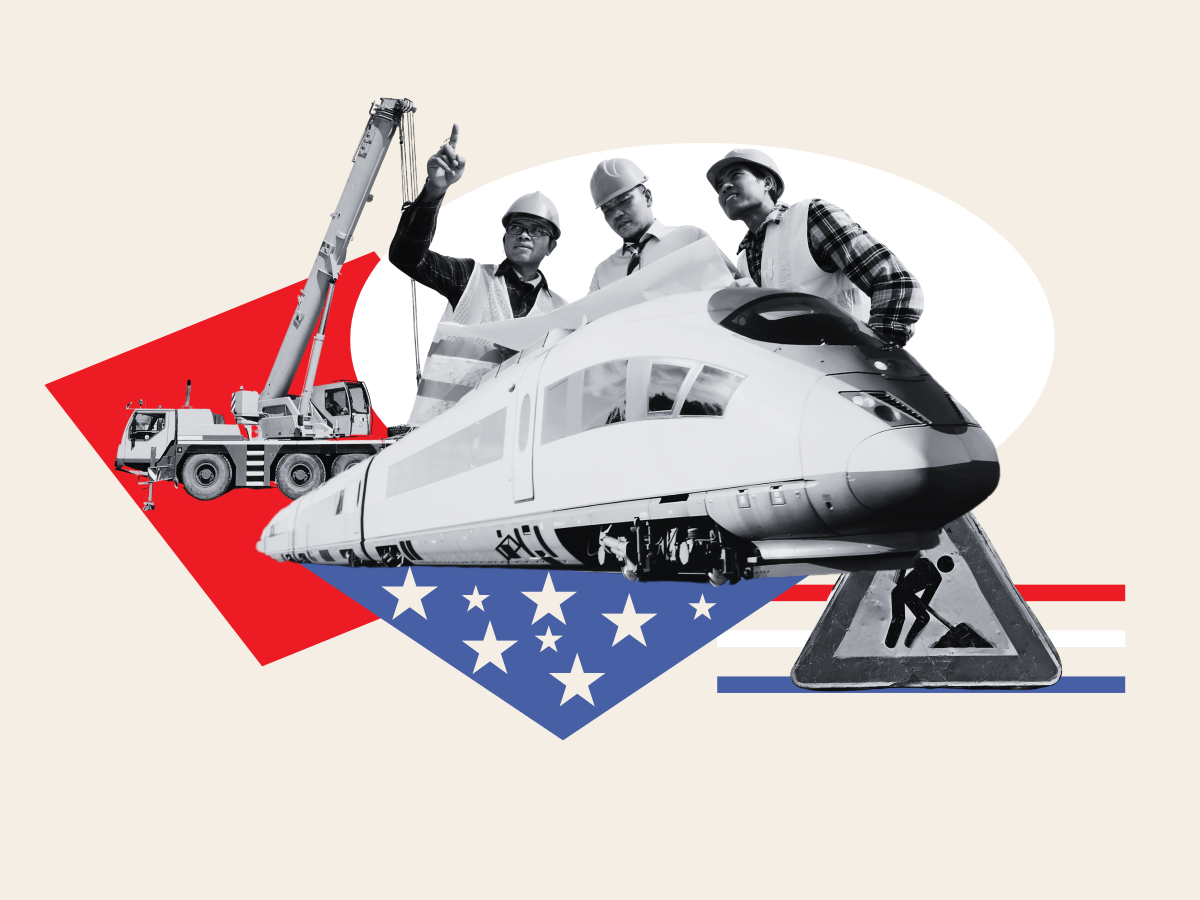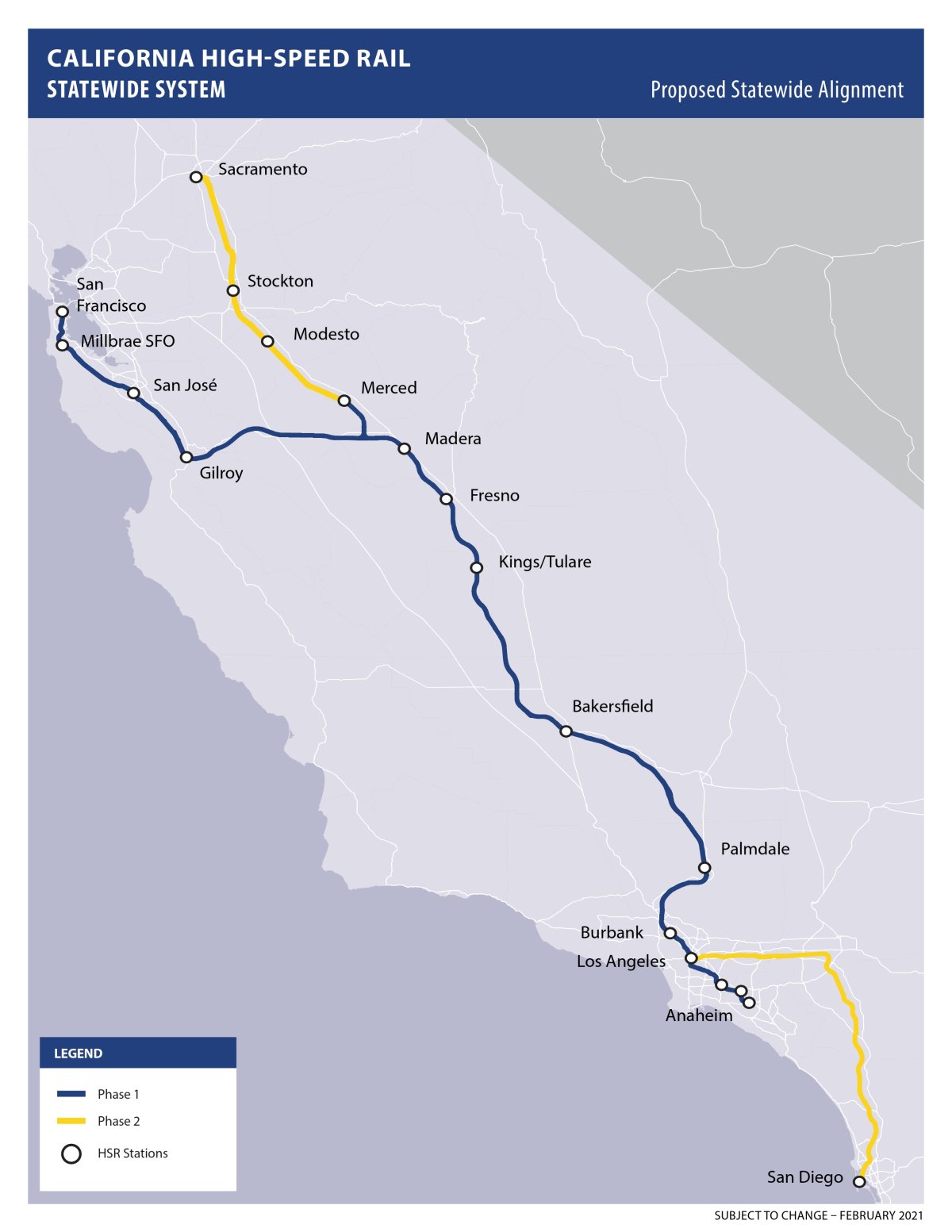
High-speed rail has been touted as one of the top priorities by many politicians in the U.S., but despite almost two decades of talk, the country’s top projects are barely taking off.
In the past 20 years, in which countries like China have laid more than 25,000 miles of high-speed rail track, the top U.S. projects have barely gotten started, causing the technology’s top proponents to ask the big question: What’s taking so long?
All Aboard In America
The largest high-speed rail project being worked on is in California, where 500 miles of track are planned to connect San Francisco, Sacramento, Los Angeles and San Diego. Originally approved by voters in 2008, the project is only ready to start laying track this year, after costs spiraled from $40 billion to as high as $128 billion.
The smaller-scale Texas high-speed rail project, which would connect Dallas with Houston over 240 miles, was first proposed in the 2000s but has yet to break ground, despite partnerships with investors from Japan who have a proven track record with bullet trains.
On their current timelines, neither project is set to become fully operational before 2030, meaning from beginning to end, their planning and construction will take more than two decades, assuming there are no further delays.
Federal And Local Opposition
One of the biggest barriers the projects face is political opposition. Infrastructure projects are costly, take a long time to yield any benefit, and the nature of high-speed rail means that a lot of stakeholders in a variety of locations need to be on board.
In the U.S., that consensus does not exist. The California high-speed rail system has faced repeated attempts from local legislators to shut it down, with many California Republicans fearing that the project is a money pit with no end.
As recently as this February, state legislators have called on Governor Gavin Newsom and President Donald Trump to put a stop to the project, with an open letter condemning high-speed rail reading: “Promised to be completed by 2020 with a price tag of $34 billion, HSRA’s projected budget ballooned to over $128 billion.
“Voters were told that more than 20 percent of the project would be privately funded. Instead, taxpayers face the reality of single-handedly funding massively inflated costs for a project that many will never use or see completed. By all metrics, the High-Speed Rail is a colossal failure.”
Texas Central
Texas’ project faces a similar issue, with the state Legislature having misgivings over the transparency of Texas Central Rail, the company spearheading the Houston-Dallas line.
In April, the state’s transportation committee held multiple meetings on the project’s finances while the wider Legislature debated whether or not funding should be revoked.
On top of that, the projects have to deal with the position of the federal government, which, for the last eight years, has see-sawed between support and hostility.
During his first administration, Trump branded high-speed rail as a “green disaster” and a “waste” and demanded that California return $3.5 billion in federal funding allocated for its project.
The Biden administration reversed the approach in 2020, only for Trump to then reverse it back this year, cutting off all future federal funding and prompting Transportation Secretary Sean Duffy to initiate a review into whether the project complied with funding requirements.
The impact of the legislative hurdles is being felt at the construction site.

Newsweek illustration/ Getty Images
“The [California] project has faced many challenges, including right-of-way acquisition, pre-construction activities like third party agreements to relocate utilities in the system’s path, various permitting requirements under state and federal law, time consuming and redundant state and federal environmental review processes, legal challenges related to those reviews, and a lack of full project funding which has resulted in costly delays and inefficient delivery,” a spokesperson for the California High-Speed Rail Authority told Newsweek.
“The Authority has taken measures to mitigate schedule related to right-of-way acquisition based on lessons learned, including staged delivery process where major construction begins only after right-of-way has been acquired.”
The Lay Of The Land
One of the other biggest delays facing U.S. high-speed rail is the very ground it’s being built on. Before shovels can even touch the soil, landowners, environmental agencies and local authorities need to be consulted and convinced that the project can go ahead, and for such long-term and complex constructions, that can be a tough sell.
“High-speed rail is extraordinarily complicated to engineer for and severely disrupts the terrain upon which it operates,” John Sitilides, a federal affairs adviser to ReRoute the Route, the business and civic coalition opposing the current Texas project model, told Newsweek. “It has a profoundly detrimental effect on the environment and as such often requires a dense and lengthy federal regulatory NEPA review to protect the public.
“Also, private project backers often try to value-engineer the route and project to save money, even when this approach may not result in the best outcome for transportation users, the environment, landowners or the general public. This cheap approach will often receive needed pushback from governing authorities, landowners, and other affected parties in the form of lawsuits and required changes. For example, the original backers of the proposed Texas project chose what they thought was the cheapest route to construct on, even though it did not best serve the public or advance the goal of transporting people efficiently and cost-effectively.”
For property owners along the route of any proposed rail network, their relationship with the construction project becomes antagonistic, as legislators are able to prevent private development in areas that the trains might need to pass through. In response, landowners dig in their heels and drag out the process as long as possible.

California High Speed Rail Authority
“High-speed rail destroys property, period,” Sitilides said. “The only properties that benefit are terminal sites. Every other property is irreparably harmed by being bisected or severely impacted with no cross access.
“Landowners who receive no benefit resist these takings of their property by inept project planners who have no clear path to financing their project, yet can thwart or prevent the use and development of private lands by landowners along the route for many years, as has occurred in Texas since 2015 with no end in sight.
“Publishing a proposed ‘route’ harms property values along or adjacent to that route for hundreds of miles, whether in California or in Texas, even if the project ultimately is never built. It is similar to an inverse condemnation or a taking without an actual taking.
“There will be natural resistance from landowners, taxpayers, and the general public in such scenarios that government bureaucrats easily neglect or dismiss, much to their eventual dismay and consternation.”
Future Of U.S. High-Speed Rail
Despite the setbacks, the California and Texas projects maintain an optimistic outlook.
“California’s high-speed rail program continues to deliver on its promise to build a fully electrified, high-speed rail system between the Bay Area and Los Angeles—creating jobs and economic opportunity, supporting housing affordability, and laying the foundation for a modern, connected transportation network that serves all Californians,” a spokesperson for the authority told Newsweek.
Texas’ project struck a similar tone when approached by Newsweek, thanking the first Trump administration for its original approval.
A Texas Central spokesperson said: “No other state can match Texas’ healthy, ‘can-do’ business environment—or better understands how to meet the needs of its people. The first Trump Administration gave this project the greenlight and, unfortunately, it got hung up in Biden Administration politics.
“We’re proud to once again be moving forward under President Trump,” the spokesperson said. “Texas Central is shovel-ready. The project will improve mobility and safety for Texans, create significant new jobs, and accelerate economic growth in the Lone Star State.”
For both projects, construction is only just beginning, and the political opposition isn’t going anywhere.
